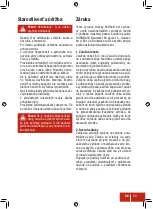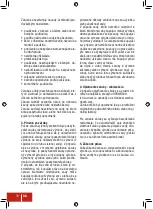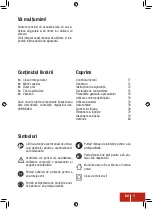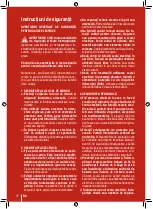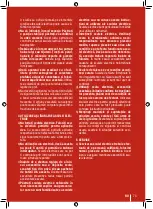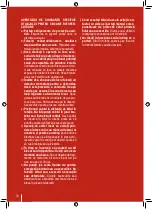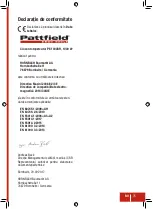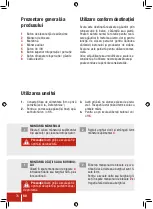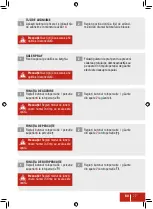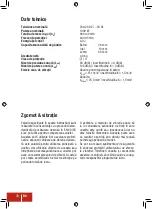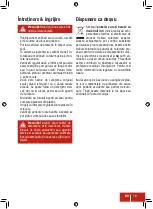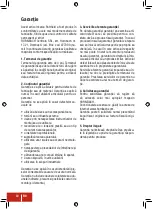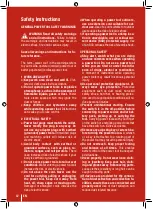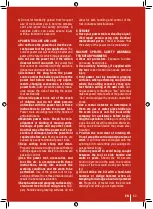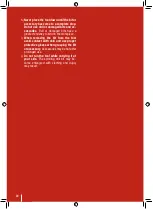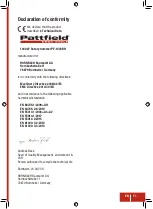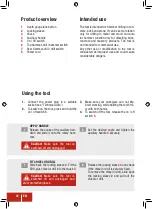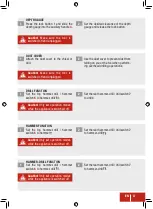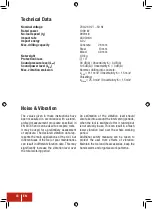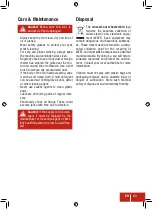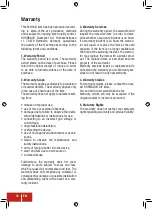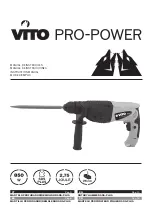
EN
83
h) Do not let familiarity gained from frequent
use of tools allow you to become compla-
cent and ignore tool safety principles. A
careless action can cause severe injury
within a fraction of a second.
4 POWER TOOL USE AND CARE
a)
Do not force the power tool. Use the cor-
rect power tool for your application.
The
correct power tool will do the job better and
safer at the rate for which it was designed.
b)
Do not use the power tool if the switch
does not turn it on and off.
Any power tool
that cannot be controlled with the switch is
dangerous and must be repaired.
c)
Disconnect the plug from the power
source and/or the battery pack from the
power tool before making any adjust-
ments, changing accessories, or storing
power tools.
Such preventive safety meas-
ures reduce the risk of starting the power
tool accidentally.
d)
Store idle power tools out of the reach
of children and do not allow persons
unfamiliar with the power tool or these
instructions to operate the power tool.
Power tools are dangerous in the hands of
untrained users.
e)
Maintain power tools. Check for mis-
alignment or binding of moving parts,
breakage of parts and any other condi-
tion that may affect the power tool’s op-
eration. If damaged, have the power tool
repaired before use.
Many accidents are
caused by poorly maintained power tools.
f)
Keep cutting tools sharp and clean.
Properly maintained cutting tools with sharp
cutting edges are less likely to bind and are
easier to control.
g)
Use the power tool, accessories and
tool bits etc. in accordance with these
instructions, taking into account the
working conditions and the work to be
performed.
Use of the power tool for op-
erations different from those intended could
result in a hazardous situation.
h)
Keep handles and grasping surfaces dry,
clean and free from oil and grease.
Slip-
pery handles and grasping surfaces do not
allow for safe handling and control of the
tool in unexpected situations.
5 SERVICE
a)
Have your power tool serviced by a qual-
ified repair person using only identical
replacement parts.
This will ensure that
the safety of the power tool is maintained.
MACHINE SPECIFIC SAFETY WARNINGS
FOR ROTARY HAMMERS
a)
Wear ear protectors.
Exposure to noise
can cause hearing loss.
b)
Use auxiliary handle(s), if supplied with
the tool.
Loss of control can cause personal
injury.
c)
Hold power tool by insulated gripping
surfaces, when performing an operation
where the cutting accessory may con-
tact hidden wiring or its own cord.
Cut-
ting accessory contacting a “live” wire may
make exposed metal parts of the power tool
“live” and could give the operator an electric
shock.
d)
Use a metal detector to determine if
there are gas or water pipes hidden in
the work area or call the local utility
company for assistance before begin-
ning the operation.
Striking or cutting into
a gas line will result in explosion. Water en-
tering an electrical device may cause elec-
trocution.
e)
Position the cord clear of rotating bit.
Do not wrap the cord around your arm or
wrist.
If cord becomes entangled with the
spinning bit it could entrap you causing seri-
ous personal injury.
f)
Position yourself to avoid being caught
between the tool or side handle and
walls or posts.
Should the bit become
bound or jammed in the work, the reaction
torque of the tool could crush your hand or
leg.
g)
Do not strike the bit with a hand-held
hammer or sledge hammer when at-
tempting to dislodge a bound or jammed
bit.
Fragments of metal from the bit could
dislodge and strike you or bystanders.

